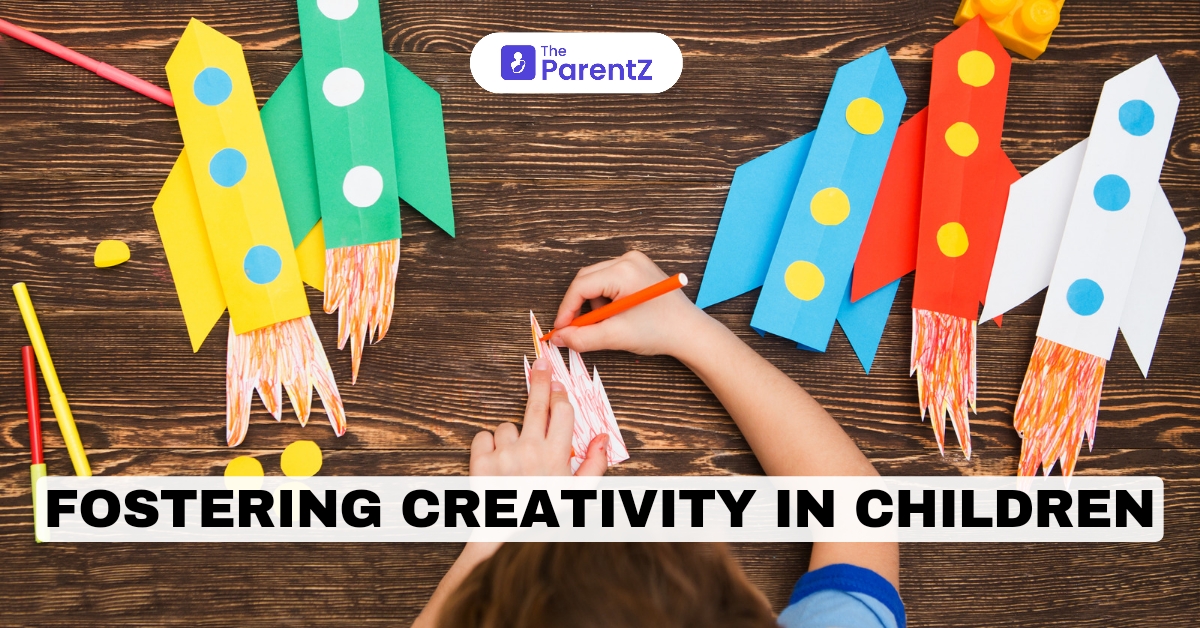Creativity is a vital skill that not only fuels artistic expression but also drives problem-solving, innovation, and critical thinking. In an increasingly complex world, fostering creativity in children is more important than ever. Encouraging creative thinking from an early age can help children develop the ability to approach challenges with curiosity and originality, equipping them with the tools they need to succeed in various aspects of life. This article explores the importance of creativity in child development, the benefits of fostering creativity, and practical strategies that parents and educators can use to nurture a child's creative potential.
The Importance of Creativity in Child Development
Creativity plays a crucial role in the cognitive, social, and emotional development of children. It is through creative activities that children learn to express themselves, experiment with new ideas, and develop a deeper understanding of the world around them.
- Cognitive Development: Creativity enhances cognitive development by promoting critical thinking, problem-solving, and intellectual curiosity. According to a study published in the Journal of Educational Psychology, children who engage in creative activities tend to exhibit higher levels of cognitive flexibility, allowing them to adapt to new situations and think outside the box.
- Social Development: Creative activities, especially those that involve collaboration, help children develop social skills such as communication, empathy, and teamwork. Group projects, role-playing, and cooperative games encourage children to work together, share ideas, and appreciate different perspectives.
- Emotional Development: Creativity provides an outlet for emotional expression and can be a powerful tool for processing and understanding emotions. Whether through drawing, writing, or imaginative play, children can explore their feelings in a safe and constructive way.
Benefits of Fostering Creativity
Encouraging creativity in children offers numerous benefits that extend beyond childhood and into adulthood. These benefits include:
- Enhanced Problem-Solving Skills: Creative children are better equipped to approach problems from multiple angles and come up with innovative solutions. This skill is invaluable in both academic and real-world settings.
- Improved Academic Performance: Creativity is linked to higher academic achievement, particularly in subjects that require critical thinking and complex reasoning. Studies have shown that students who engage in creative activities tend to perform better in areas such as math, science, and reading.
- Increased Resilience: Creativity fosters resilience by teaching children to view challenges as opportunities for growth and learning. Creative children are more likely to persevere through setbacks and adapt to change with confidence.
- Stronger Sense of Identity: Creative expression allows children to explore their interests, values, and identities. This exploration helps them develop a strong sense of self and contributes to their overall emotional well-being.
Strategies for Fostering Creativity in Children
Parents and educators can take several steps to nurture creativity in children. These strategies focus on creating an environment that encourages exploration, experimentation, and imaginative thinking.
- Provide Open-Ended Materials: Offer children a variety of open-ended materials, such as art supplies, building blocks, and natural objects, that can be used in multiple ways. These materials encourage creative exploration and allow children to experiment with different ideas without the constraints of predefined outcomes.
- Encourage Imaginative Play: Imaginative play is a cornerstone of creativity. Provide opportunities for children to engage in pretend play, whether it’s playing house, acting out stories, or creating imaginary worlds. This type of play helps children develop creative thinking, problem-solving skills, and social-emotional understanding.
- Support Risk-Taking and Experimentation: Creativity thrives in environments where children feel safe to take risks and make mistakes. Encourage your child to try new things, experiment with different approaches, and learn from failures. Emphasize the process of creation rather than focusing solely on the final product.
- Promote Curiosity and Inquiry: Foster a sense of curiosity by encouraging your child to ask questions, explore new topics, and seek out answers. Create opportunities for inquiry-based learning, where children can investigate subjects that interest them and pursue their own lines of questioning.
- Integrate the Arts: The arts—such as music, dance, theater, and visual arts—are powerful tools for fostering creativity. Encourage your child to participate in artistic activities, whether through formal lessons or informal exploration. Exposure to different art forms helps children develop creative skills and appreciate the diverse ways in which creativity can be expressed.
- Create a Stimulating Environment: Design a home or classroom environment that stimulates creativity. This could include a dedicated space for art projects, access to a variety of books and educational resources, and opportunities for outdoor exploration. A stimulating environment provides the resources and inspiration children need to engage in creative activities.
- Model Creativity: Children learn by observing the adults around them. Model creative behavior by engaging in your own creative pursuits, whether it’s drawing, writing, cooking, or problem-solving. Share your creative process with your child and involve them in activities where they can contribute their own ideas.
Encouraging Creativity in Different Age Groups
Creativity can be nurtured at any age, but the approach may vary depending on the child's developmental stage.
- Toddlers and Preschoolers: At this stage, focus on sensory exploration and imaginative play. Provide a variety of textures, colors, and materials for sensory experiences, and encourage pretend play through dress-up, storytelling, and role-playing.
- School-Aged Children: For school-aged children, introduce more structured creative activities that involve problem-solving, collaboration, and critical thinking. Encourage participation in group projects, creative writing, and arts and crafts.
- Adolescents: Teenagers may benefit from opportunities to explore their creative interests more deeply. Encourage them to pursue hobbies such as photography, music, or digital art, and provide resources for them to develop their skills. Support their creative endeavors by offering constructive feedback and celebrating their achievements.
The Role of Schools and Communities
Schools and communities play a crucial role in fostering creativity in children. Educational programs that integrate the arts, promote project-based learning, and encourage creative thinking can have a lasting impact on a child's development.
- Arts Education: Schools should prioritize arts education as a core component of the curriculum. Access to music, theater, visual arts, and dance classes helps children develop creative skills and express themselves in new ways.
- Project-Based Learning: Project-based learning allows students to engage in hands-on, interdisciplinary projects that require creative problem-solving and collaboration. This approach encourages students to think critically, work together, and apply their creativity to real-world challenges.
- Community Programs: Community programs, such as art workshops, maker spaces, and cultural events, provide additional opportunities for creative exploration. These programs can help children connect with like-minded peers, learn from experienced mentors, and gain exposure to different creative practices.
Conclusion
Fostering creativity in children is essential for their cognitive, social, and emotional development. By providing opportunities for imaginative play, encouraging risk-taking, and promoting curiosity, parents and educators can help children develop the creative skills they need to succeed in an ever-changing world. Creativity is not just about artistic expression—it is a fundamental life skill that enhances problem-solving, resilience, and self-identity. By nurturing creativity from an early age, we equip children with the tools they need to approach challenges with confidence, innovation, and originality.








Be the first one to comment on this story.